Chef's Choice Diamond Hone 4640 Handleiding
Chef's Choice
Messenslijper
Diamond Hone 4640
Bekijk gratis de handleiding van Chef's Choice Diamond Hone 4640 (3 pagina’s), behorend tot de categorie Messenslijper. Deze gids werd als nuttig beoordeeld door 77 mensen en kreeg gemiddeld 4.4 sterren uit 39 reviews. Heb je een vraag over Chef's Choice Diamond Hone 4640 of wil je andere gebruikers van dit product iets vragen? Stel een vraag
Pagina 1/3

Diamond Hone®
Knife Sharpener
Model 4640
USING THE MODEL 4640
Note: Always clean your knife before sharpening
in the Model 4640!
You will find that the Model 4640 can create and
maintain an exceedingly sharp and effective edge
on all your conventional fine edge and serrated
cutlery. The primary edge facets are each formed in
Stage 1 or 2 at a nominal 15 or 20 degrees which
results in a total primary edge of 30 or 40 degrees.
Final stage 3 creates a second bevel at a slightly
larger angle leaving a strong double beveled edge
structure that will stay sharp longer.
Always use the sharpener with the stage
numbers 1, 2 and 3, facing you.
Safety: Keep your fingers clear of the blade
edge at all times. Hold the handle with your left
hand making certain that your fingers and thumb
remain safely behind the partition wall where the
handle attaches to the sharpening section.
SHARPENING INSTRUCTIONS
The Chef’sChoice® Diamond Hone® Model 4640
is a unique three stage combination diamond
sharpener that houses two proven technologies,
including interdigitating pads and Pronto® wheels
and is ideal for creating a razor sharp edge on
15° Asian double-faceted blades and all popular
European or American style 20° knives. It can
also be used for sporting, pocket and serrated
blades. This novel three stage design, using 100%
diamond abrasives, features a two step sharpening
process for placing a razor-sharp, longer lasting
edge on your knives. If your knife is a 15° Asian
or Euro/American blade it is sharpened fully in
Stage 1 and then the edge is micro-honed and
polished to superior sharpness in the “Polishing
& Serrated” Stage 3. To sharpen a traditional 20°
Euro/American style blade, it is sharpened first in
Stage 2 and then honed and micro polished in the
“Polishing & Serrated” Stage 3.
Both sides of the knife edge are simultaneously
shaped sharpened and . This construction ensures
that the edges are well formed and very sharp
every time. The abrasives in the sharpening
stages 1 and 2 consist of selected 100% diamond
crystals embedded on unique interdigitating steel
support plates. Stage 3 uses 100% ultra-fine
diamond crystals embeded on two unique precision
sharpening disks. The Model 4640 consistently
outperforms conventional sharpeners that use
less efficient abrasives and lack any control of the
sharpening angle. Diamonds, the hardest known
material, are extremely durable.
Straight-edge knives sharpened on the Model
4640 will be “shaving sharp” with a mild “bite”
that helps them cut effortlessly through tomatoes,
Congratulations!!
The M4640 Diamond Hone® manufactured by
Chef’sChoice®, the worlds leader in cutting edge
technology, is a fast manual sharpener that will
create an exceptionally effective cutting edge
on all of your conventional household and sport
cutlery. The cutting edge is finely honed to extreme
sharpness but retains strong microscopic teeth
that gives it a highly effective bite for all your food
prep needs and especially for fibrous materials. The
edge is surprisingly durable yet can be resharpened
quickly whenever necessary.
You will be pleased to see how easy the M4640
is to use and how well your knives perform. Read
and follow the instructions carefully. Keep the
sharpener close at hand so that you can enjoy the
pleasure of sharp knives every day.
You are likely aware of which of your knives
have 15 degree edges and which have the older
20 degree edges. Until recently virtually all knives
sold in America were either made in Germany or
the U.S. and these were universally sharpened at
20 degrees. Around year 2000 Asian style knives
sharpened at 15 degrees became popular. Within
the last few years selected European and American
brand knives were introduced with 15 degree
edges. You will probably want to sharpen each
of these at their original factory angles. However
you can, if you wish sharpen your older 20° knives
using the sharpening procedure described here
for 15° knives. The first time you sharpen a 20°
knife at 15°, it will take longer to sharpen but
after that the resharpening time will be typical of
15 degree knives.
Do not attempt to sharpen single faceted Asian
(15°) knives such as the sashimi knives. See section
titled “Specialized Asian Blades.
GB
Limited Warranty: Used with normal care, this EdgeCraft
product is guaranteed against defective material and
workmanship for a period of one (1) year from date of original
purchase (“Warranty Period”). We will replace or repair, at
our option, any product or part that is defective in material
or workmanship without charge if the product is returned
to us postage paid with dated proof of purchase within the
Warranty Period. This warranty does not apply to commercial
use or any product abuse. ALL IMPLIED WARRANTIES,
INCLUDING IMPLIED WARRANTIES OF MERCHANTABILITY
AND FITNESS FOR A PARTICULAR PURPOSE, ARE LIMITED TO
THE WARRANTY PERIOD. EDGECRAFT CORPORATION SHALL
NOT BE LIABLE FOR ANY INCIDENTAL OR CONSEQUENTIAL
DAMAGES. Some states do not allow limitations on how
long an implied warranty lasts and some states do not
allow exclusions or limitations of incidental or consequential
damages, so the above limitations or exclusions may not
apply to you. This limited warranty gives you specific legal
rights, and you may also have other rights which vary
from state to state.
© 2015 EdgeCraft Corporation E15 M6319A6
www.chefschoice.com
ENGINEERED AND
ASSEMBLED IN THE U.S.A.!
by the makers of the acclaimed Chef’sChoice
®
Diamond Hone
® Knife Sharpeners,
sold worldwide.
EdgeCraft Corporation
825 Southwood Road
Avondale, PA 19311 U.S.A.
(800)342-3255 (610)268-0500
Chef’sChoice® EdgeCraft® and Diamond Hone® are
trademarks of the EdgeCraft Corporation. This product
may be covered by one or more EdgeCraft patents
and/or patents pending as marked on the product.
other vegetables and fruits. It makes cutting and
slicing a pleasure and removes the drudgery of
working with dull knives. This sharpener creates
a double-beveled longer-lasting arch-shaped edge
which is stronger than conventional “V-shaped” or
hollow ground edges. This unique arch structure
ensures a sharper edge that will stay sharp longer.
TO SHARPEN ASIAN, SANTOKU
OR OTHER 15° DOUBLE-FACETED
EDGE BLADES
Sharpening (Use only Stages 1 and 3)
Place the sharpener on a secure level surface.
Clean the knife well before sharpening. Hold the
sharpener handle with left hand keeping index
finger and thumb behind the partitioning wall of
sharpening section. Position knife blade with other
hand in stage 1 marked 15°. Center the blade (left
and right) in the slot so that the face of the blade
does not touch either side wall of the slot. Slide
the blade repeatedly forward and back toward you
along its full length. Apply only modest downward
pressure as it is sharpened. (Avoid excessive
downward pressure on blade that might damage
the sharpening elements.) Unless the blade is very
dull or never sharpened before at 15°, twenty-five
(25) back and forth full strokes will likely suffice.
Otherwise continue sharpening (back and forth
strokes) until the knife is sharp enough to cut
paper well or slice easily thru a tomato. If the knife
is very dull or the factory edge is larger than 15°,
one hundred or more full strokes may be needed
the first time to fully reset the angle and sharpen
in the Stage 1. This completes the sharpening
step. Proceed to the next step, Honing/Polishing.
Honing/Polishing (Use Stage 3)
If the knife is correctly presharpened in Stage
1 only 2-3 back and forth stroke pairs in Stage
3 will complete the small second bevel and the
edge will be very sharp and effective. It should cut
paper smoothly allowing you to make straight or
curved cuts easily.
For optimum results center the blade (left and
right) within the slot and keep the length of the
blade aligned with the center line of the slot as you
sharpen. Apply about 3-4 pounds pressure on the
blade in Stage 3. Make smooth consistent strokes
while maintaining recommended downward
pressure and make certain the disks are turning.
TO SHARPEN EURO/AMERICAN AND
OTHER 20° EDGE KNIVES
(Use stage 2 and 3)
Follow the general procedures described above,
but sharpen first in Stage 2. You should use only
Stages 2 and 3 (Polishing & Serrated) as follows:
Sharpening (Use Stage 2)
Position the blade in the Stage 2. Center the
blade (left and right) in the slot so that the face of
the blade does not touch either side wall of the
slot. Slide the blade repeatedly forward and back
toward you along its full length. Apply only modest
downward pressure as it is sharpened. (Avoid
excessive downward pressure on blade that might
damage the sharpening elements.) Unless the
blade is very dull, twenty-five (25) back and forth
full strokes will likely suffice. Otherwise continue
sharpening (back and forth strokes) until the knife is
sharp enough to cut paper well or slice easily thru
a tomato. If the knife is very dull, one hundred or
more full strokes may be needed, the first time,to
fully sharpen in this Stage. This completes the
first sharpening step. Proceed to Honing/Polishing.
Honing/Polishing (Use Stage 3)
If the knife is correctly presharpened in Stage 2 ,
then only 2-3 back and forth stroke pairs in Stage
3 will complete the small second bevel and the
edge will be very sharp and effective. It should
cut paper smoothly allowing you to make straight
or curved cuts easily.
For optimum results center the blade (left and
right) within the slot and keep the length of the
blade aligned with the center line of the slot as you
sharpen. Apply about 3-4 pounds pressure on the
blade in Stage 3. Make smooth consistent strokes
while maintaining recommended downward
pressure and make certain the disks are turning.
RESHARPENING THE KNIFE EDGE
Follow the procedure described above for Honing/
Polishing, in Stage 3, making two to three (2-3)
pairs of back and forth strokes while maintaining
recommended downward pressure. Listen to
confirm the sharpening disks are turning. Test
edge for sharpness.
Generally you should be able to resharpen 2 or
3 times using only Stage 3.
SERRATED BLADES
Serrated blades can be sharpened in Stage 3.
Center the blade in the slot of Stage 3 and make
two-to-three (2-3) back and forth stroke pairs.
Test the edge and if necessary make another 5 full
strokes. If the blade to be sharpened is very dull,
first make two full strokes (back and forth pairs) in
Stage 1 or 2 (depending on the knife being a 15°
or 20° blade) and then make two-to-three (2-3)
paired strokes in Stage 3. Because of its nature,
a serrated knife will never appear as sharp or cut
as smoothly as a straight edged blade. Caution:
Do not make many strokes in Stage 1 or 2, which
can quickly remove metal from a serrated edge.
CERAMIC KNIVES
The Model 4640 is not recommended for ceramic
knives.
SCISSORS
Do not attempt to use the Model 4640 to sharpen
scissors. EdgeCraft does manufacture both electric
and manual scissor sharpeners.
BRANDS OF KNIVES
The Model 4640 will put an excellent edge on all
of conventional metal Euro/American and Santoku
style knives regardless of brands, including
Henckels, Wüsthof, Shun, Sabatier, Lamson and
Goodnow, Global, Russell Harrington, Chef’sChoice,
Mundial, Messermeisser, Forshner, Cuisinart,
Kitchen Aid and many, many more.
TEST FOR SHARPNESS
To test for sharpness and cutting ability of your
knife, hold a sheet of paper vertically by its upper
edge and carefully cut down through the sheet a
small (but safe) distance from your fingers. A sharp
edge (on a straight edge blade) will cut smoothly
without tearing the paper.
Alternatively try cutting a tomato. The
knife should penetrate the skin of the tomato
and cut through it on the first pull without applying
significant force to the knife.
MAINTENANCE:
• Theexteriorcanbecleanedwithadamp
soft cloth
• Periodicallyshakeoutanddisposeofthe
metal sharpening dust by inverting the
sharpener and lightly tapping it onto a
newspaper, paper towel, or other paper sheet
• Nooilsorotherlubricatingliquidsare
necessary with this sharpener
Figure 1. Knife in Stage 1. Use back and forth
sharpening strokes with modest downward pressure
(See text.) Figure 3. Serrated knife in Stage 3.
Figure 2. Knife in Stage 2.

Diamond Hone®
de Chef’sChoice®
Modelo 4640
pero después, el proceso de reafilado le llevará
el mismo tiempo que con los cuchillos de 15º.
No intente afilar cuchillos asiáticos de una sola
cara (de 15º), como los cuchillos para preparar
sashimi. Consulte la sección titulada «Hojas
asiáticas especializadas».
USO DEL MODELO 4640
Nota: ¡Limpie siempre su cuchillo antes de afilarlo
con el Modelo 4640!
Descubrirá que el Modelo 4640 puede crear
y mantener un borde sumamente afilado y
efectivo en todos sus cuchillos rectos y dentados
convencionales. Cada una de las facetas de corte
primarias se forman en la Fase 1 y la Fase 2 con
un ángulo nominal de 15 o 20 grados, lo que tiene
como resultado un filo primario total de 30 o 40
grados. La Fase 3 final crea un segundo bisel con
un ángulo ligeramente superior, lo que permite la
formación de una estructura de filo de bisel doble
que se mantendrá afilada durante más tiempo.
Utilice siempre el afilador con los números de
las fases, 1, 2 y 3, hacia usted.
Seguridad: Mantenga los dedos alejados del
filo de la hoja en todo momento. Sujete el mango
con la mano izquierda de tal modo que los dedos
permanezcan seguros detrás de la pared divisoria
donde el mango se une a la sección de afilado.
INSTRUCCIONES DE AFILADO
El Diamond Hone® Modelo 4640 de Chef’sChoice®
es un exclusivo afilador de diamante con tres etapas
que está equipado con dos tecnologías probadas,
incluidas las almohadillas interdigitantes y las
ruedas Pronto®, y que es ideal para crear bordes
sumamente afilados en las hojas asiáticas de
doble cara de 15º y en los populares cuchillos de
estilo europeo y americano de 20º. También puede
utilizarse para cuchillos deportivos, navajas y hojas
dentadas. Este diseño novedoso de tres fases, que
utiliza abrasivos de diamante 100%, presenta un
proceso de afilado compuesto por dos pasos que
garantiza el máximo nivel de afilado y una mayor
durabilidad para sus cuchillos. Si su cuchillo tiene
una hoja europea/americana o asiática de 15º,
podrá afilarlo en la Fase 1 y, a continuación, el filo
se puede microbruñir y pulir para conseguir una
calidad de afilado superior en la Fase 3 «Pulido
y Dentado». Para afilar una hoja de 20º de estilo
europeo/americano tradicional, esta primero debe
afilarse en la Fase 2 y, a continuación, bruñirse
y micropulirse en la Fase 3 «Pulido y Dentado».
Ambas caras del filo del cuchillo se y moldean
afilan simultáneamente. Esta estructura garantiza
que los bordes estén bien formados y muy afilados
en todo momento. Los abrasivos de las fases 1
¡Enhorabuena!
El M4640 Diamond Hone® fabricado por
Chef’sChoice®, líder a escala mundial en tecnología
de corte avanzada, es un afilador manual y rápido
que dotará a todos sus cuchillos domésticos
y deportivos convencionales de una eficacia
superior y excepcional. Las hojas de sus cuchillos se
afilarán al máximo nivel, al tiempo que conservarán
potentes dientes microscópicos que permitirán
un corte sumamente eficaz a la hora de trabajar
con alimentos y especialmente con materiales
fibrosos. El filo de todos sus cuchillos adquirirá una
durabilidad excepcional y además podrá volver a
afilarlo rápidamente siempre que sea necesario.
Se sorprenderá cuando descubra lo fácil que
es utilizar el M4640 y lo bien que funcionan sus
cuchillos. Lea y siga las instrucciones atentamente.
Mantenga el afilador a mano para que pueda
disfrutar del placer de tener cuchillos afilados
todos los días.
Probablemente sepa cuáles de sus cuchillos
tienen filos de 15 grados y cuáles (los más
antiguos) tienen filos de 20 grados. Hasta hace
poco, prácticamente todos los cuchillos vendidos
en América se fabricaban en Alemania o en los
Estados Unidos, y estaban afilados a 20 grados.
Hacia el año 2000, los cuchillos de estilo asiático
de 15 grados empezaron a hacerse populares.
En los últimos años, algunas marcas europeas y
americanas han empezado a comercializar
cuchillos con filos de 15 grados. Seguramente
desee afilar sus cuchillos de acuerdo a sus ángulos
originales de fábrica. Sin embargo, si lo desea,
también puede afilar sus cuchillos más antiguos
de 20º utilizando el procedimiento aquí descrito
para cuchillos de 15º. La primera vez que afile a
un cuchillo de 20º a 15º, tardará más en afilarlo,
E
Garantía Limitada: Si se utiliza con unos cuidados nor-
males, este producto EdgeCraft está garantizado contra
defectos de materiales o mano de obra por un período
de un (1) año a partir de la fecha de compra original
(«Período de Garantía»). Repararemos o sustituiremos, a
nuestra discreción, cualquier producto o pieza que presente
defectos de materiales o mano de obra sin cargo alguno si
el producto nos es devuelto mediante franqueo pagado junto
con el comprobante de compra fechado dentro del Período
de Garantía. Esta garantía no se aplica al uso comercial
ni a ningún mal uso del producto. TODAS LAS GARANTÍAS
IMPLÍCITAS, INCLUIDAS LAS GARANTÍAS IMPLÍCITAS DE
COMERCIALIZACIÓN Y ADECUACIÓN PARA UN FIN PAR-
TICULAR, ESTÁN LIMITADAS AL PERÍODO DE GARANTÍA.
EDGECRAFT CORPORATION NO SE HACE RESPONSABLE DE
NINGÚN DAÑO INCIDENTAL O DERIVADO. Algunos estados
no permiten limitaciones en la duración de las garantías
implícitas y algunos estados no permiten exclusiones o
limitaciones de daños incidentales o derivados, por lo que las
limitaciones o exclusiones anteriores pueden no aplicarse en
su caso. Esta Garantía Limitada le otorga derechos legales
específicos, y es posible que usted también tenga otros
derechos que varíen en función del estado.
© 2015 EdgeCraft Corporation E15 M6319A6
www.chefschoice.com
MONTADO EN LOS ESTADOS UNIDOS
DE AMÉRICA.
De los fabricantes de los afiladores
profesionales de cuchillos Chef’sChoice®
Diamond Hone® de venta mundial.
EdgeCraft Corporation
825 Southwood Road
Avondale, PA 19311 U.S.A.
(800)342-3255 (610)268-0500
Este producto puede estar cubierto por una o más
patentes aprobadas o pendientes de aprobación de
EdgeCraft, como se indica en el producto.
y 2 de afilado están compuestos por cristales de
diamante 100% incrustados en placas de soporte
de acero interdigitantes. La Fase 3 utiliza cristales
de diamante 100% ultrafinos incrustados en
dos discos de afilado de precisión superior. El
modelo 4640 supera a los afiladores convencio-
nales que utilizan abrasivos menos eficientes y
carecen de control sobre el ángulo de afilado. Los
diamantes, que son el material más duro conocido,
son extremadamente duraderos.
Los cuchillos de hoja recta afilados con el Modelo
4640 ofrecen un acabado de alta precisión y un
corte completamente limpio, lo que les permite
cortar sin esfuerzo tomates y otras verduras y
frutas. Hace que cortar y rebanar se convierta en
un placer y elimina la molestia de trabajar con
cuchillos desafilados. Este afilador crea un filo
arqueado, de bisel doble y duradero que es mucho
más potente que los filos convencionales «en forma
de V» o vaciados con muela. Esta estructura única
en arco garantiza un borde más afilado y durante
más tiempo.
PARA AFILAR CUCHILLOS ASIÁTICOS,
SANTOKU U OTRAS HOJAS DE 15º Y
DOBLE CARA
Afilado (Utilice solo las Fases 1 y 3)
Coloque el afilador sobre una superficie nivelada
y segura. Limpie bien el cuchillo antes de afilarlo.
Sujete el mango del afilador con la mano derecha
manteniendo los dedos índice y pulgar detrás de
la pared divisoria de la sección de afilado. Con la
otra mano, coloque la hoja del cuchillo en la Fase 1
(indicada con la marca 15º). Centre la hoja (izquierda
y derecha) en la ranura de modo que la cara de
la hoja no toque ninguna de las paredes laterales
de la ranura. Deslice la hoja repetidamente hacia
delante y hacia atrás en dirección a usted a lo largo
de toda la longitud de la hoja. Ejerza solo una ligera
presión hacia abajo durante el proceso de afilado.
(Evite ejercer una presión excesiva sobre la hoja, p2-ya
que eso podría dañar los elementos del afilador). A
menos que el filo esté muy desafilado o que nunca
antes se haya afilado a 15º, debería haber suficiente
con veinticinco (25) pasadas completas hacia atrás
y hacia delante. De lo contrario, continúe afilando
el cuchillo (pasadas hacia atrás y hacia delante)
hasta que el cuchillo esté lo bastante afilado para
cortar un trozo de papel o un tomate fácilmente.
Si el cuchillo está muy desafilado o el filo de serie
supera los 15º, la primera vez que lo afile podrían
necesitarse cien o más pasadas completas para
restablecer el ángulo y afilarlo en la Fase 1. Aquí
finaliza el paso de afilado. Continúe con el siguiente
paso: Bruñido/Pulido.
Bruñido/Pulido (Use la Fase 3)
Si el cuchillo se p2-ha preafilado correctamente en
la Fase 1, en la Fase 3 solo se necesitarán 2 o 3
pasadas hacia atrás y hacia delante para completar
el segundo bisel pequeño, después de lo cual el
borde estará afilado y será eficaz. Un cuchillo bien
afilado debería cortar papel fácilmente y permitirle
realizar cortes curvos y rectos.
Para unos resultados óptimos, centre la hoja
(izquierda y derecha) en la ranura y mantenga la
longitud de la hoja alineada con la línea central
de la ranura mientras se afila el cuchillo. Ejerza
una presión de 3-4 libras sobre la hoja en la Fase
3. Realice pasadas suaves y constantes mientras
ejerce la presión recomendada y asegúrese de
que los discos están girando.
PARA AFILAR CUCHILLOS
EUROPEOS/AMERICANOS Y OTROS
CUCHILLOS DE 20º
(Use las fases 2 y 3)
Siga los procedimientos generales descritos ante-
riormente, pero afile el cuchillo primero en la Fase
2. Deberá utilizar solamente las Fases 2 y 3 (Pulido
y Dentado), tal y como se describe a continuación:
Afilado (Use la Fase 2)
Coloque la hoja en la Fase 2. Centre la hoja (iz-
quierda y derecha) en la ranura de modo que la
cara de la hoja no toque ninguna de las paredes
laterales de la ranura. Deslice la hoja repetidamente
hacia delante y hacia atrás en dirección a usted a
lo largo de toda la longitud de la hoja. Ejerza una
presión ligera hacia abajo mientras se está afilando
el cuchillo. (Evite ejercer una presión excesiva sobre
la hoja, ya que eso podría dañar los elementos del
afilador). A menos que el filo esté muy desafilado,
debería haber suficiente con veinticinco (25)
pasadas completas hacia atrás y hacia delante. De
lo contrario, continúe afilando el cuchillo (pasadas
hacia atrás y hacia delante) hasta que el cuchillo
esté lo bastante afilado para cortar un trozo de
papel o un tomate fácilmente. Si el cuchillo está
muy desafilado, la primera vez que lo afile podrían
necesitarse cien o más pasadas completas para
afilarlo por completo en esta Fase. Aquí finaliza el
primer paso de afilado. Proceda con Bruñido/Pulido.
Bruñido/Pulido (Use la Fase 3)
Si el cuchillo se p2-ha preafilado correctamente en
la Fase 2, en la Fase 3 solo se necesitarán 2 o 3
pasadas hacia atrás y hacia delante para completar
el segundo bisel pequeño, después de lo cual el
borde estará afilado y será eficaz. Un cuchillo bien
afilado debería cortar papel fácilmente y permitirle
realizar cortes curvos y rectos.
Para unos resultados óptimos, centre la hoja
(izquierda y derecha) en la ranura y mantenga la
longitud de la hoja alineada con la línea central
de la ranura mientras se afila el cuchillo. Ejerza
una presión de 3-4 libras sobre la hoja en la Fase
3. Realice pasadas suaves y constantes mientras
ejerce la presión recomendada y asegúrese de
que los discos están girando.
REAFILADO DEL FILO DEL CUCHILLO
Siga el procedimiento descrito a continuación
para efectuar el proceso de Bruñido/Pulido, en la
Fase 3, realizando entre dos y tres (2-3) pares de
pasadas hacia atrás y hacia delante mientras ejerce
la presión recomendada sobre la hoja. Escuche para
confirmar que los discos de afilado están girando.
Compruebe el nivel de afilado.
Por lo general, debería poder reafilar un cuchillo
2 o 3 veces usando solo la Fase 3.
HOJAS DENTADAS
Las hojas dentadas se pueden afilar en la Fase 3.
Centre la hoja en la ranura de la Fase 3 y realice
entre dos y tres (2-3) pares de pasadas hacia atrás
y hacia delante. Compruebe el nivel de afilado y, si
fuera necesario, realice otras 5 pasadas completas.
Si la hoja que desea afilar está muy desafilada,
primero realice dos pasadas completas (hacia atrás
y hacia delante) en la Fase 1 o 2 (dependiendo
de si la hoja del cuchillo es de 15º o de 20º) y, a
continuación, realice entre dos y tres (2-3) pares
de pasadas en la Fase 3. Debido a su naturaleza,
los cuchillos dentados nunca parecen tan afilados
o cortan tan bien como un cuchillo de filo recto.
Precaución: No realice demasiadas pasadas en
la Fase 1 o 2, p2-ya que el filo dentado en seguida
puede desprender metal.
CUCHILLOS DE CERÁMICA
El Modelo 4640 no está recomendado para cuchillos
de cerámica.
TIJERAS
No intente utilizar el Modelo 4640 para afilar
tijeras. EdgeCraft fabrica afiladores para tijeras
tanto eléctricos como manuales.
MARCAS DE CUCHILLOS
El Modelo 4640 permite crear un filo excelente para
todos los cuchillos metálicos de estilo europeos/
americanos y Santoku convencionales, indepen-
dientemente de la marca, incluidas Henckels,
Wüsthof, Shun, Sabatier, Lamson and Goodnow,
Global, Russell Harrington, Chef’sChoice, Mundial,
Messermeisser, Forshner, Cuisinart, Kitchen Aid y
muchas más.
COMPROBACIÓN DEL NIVEL DE AFILADO
Para comprobar el nivel de afilado y la capacidad
de corte de su cuchillo, sujete un trozo de papel
en vertical por el extremo superior y, con mucho
cuidado, realice un corte sobre el papel a una
distancia corta (pero segura) de sus dedos. Si el filo
(de un cuchillo de hoja recta) está bien afilado, el
cuchillo cortará suavemente el papel sin rasgarlo.
Alternativamente, pruebe a cortar un tomate.
El cuchillo debería penetrar en la piel del tomate
y cortarlo a la primera sin necesidad de aplicar
demasiada fuerza.
MANTENIMIENTO:
• Elexteriorpuedelimpiarseconuntrapo
suave y húmedo
• Devezencuando,sacudayexpulselos
restos metálicos del proceso de afilado
girando el afilador y dándole unos golpecitos,
para que los restos caigan sobre un periódico,
una servilleta o una hoja de papel
• Conestealadornoesnecesarioelusode
aceites u otros líquidos lubricantes
Figura 1. Cuchillo en la Fase 1. Realice pasadas hacia
atrás y hacia delante aplicando una ligera presión hacia
abajo (vea el texto) Figura 3. Cuchillo dentado en la Fase 3.Figura 2. Cuchillo en la Fase 2.
Product specificaties
| Merk: | Chef's Choice |
| Categorie: | Messenslijper |
| Model: | Diamond Hone 4640 |
Heb je hulp nodig?
Als je hulp nodig hebt met Chef's Choice Diamond Hone 4640 stel dan hieronder een vraag en andere gebruikers zullen je antwoorden
Handleiding Messenslijper Chef's Choice

8 Januari 2024

8 Januari 2024

28 Oktober 2023

28 Oktober 2023

28 Oktober 2023

28 Oktober 2023

28 Oktober 2023

28 Oktober 2023

28 Oktober 2023

28 Oktober 2023
Handleiding Messenslijper
- Ribimex
- Draper
- Blokker
- For_Q
- Orbegozo
- Ozito
- Sun Joe
- Guzzanti
- GARDE
- Gude
- Bomann
- Gourmetmaxx
- C3
- Adler
- Princess
Nieuwste handleidingen voor Messenslijper
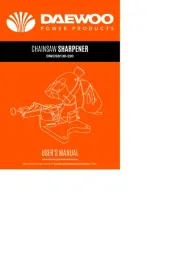
5 Juli 2025
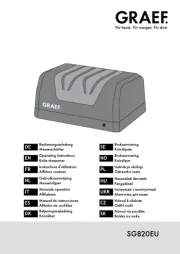
4 Juli 2025
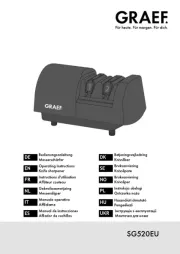
4 Juli 2025

18 Juni 2025
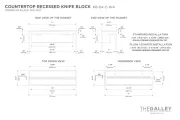
17 Juni 2025
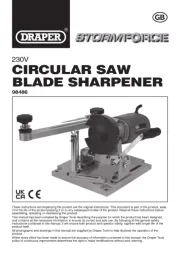
30 Mei 2025
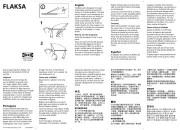
15 April 2025
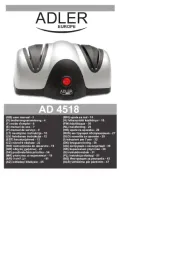
8 April 2025
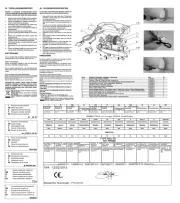
29 Maart 2025

13 Maart 2025